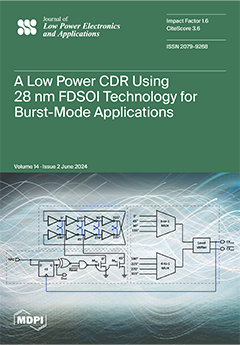Open AccessArticle
A Microdevice in a Submicron CMOS for Closed-Loop Deep-Brain Stimulation (CLDBS)
by
Tiago Matheus Nordi, Rodrigo Gounella, Marcio L. M. Amorim, Maximiliam Luppe, João Navarro Soares Junior, Joao L. Afonso, Vitor Monteiro, Jose A. Afonso, Erich Talamoni Fonoff, Eduardo Colombari and João Paulo Carmo
Viewed by 1733
Abstract
Deep-brain stimulation (DBS) is a highly effective and safe medical treatment that improves the lives of patients with a wide range of neurological and psychiatric diseases. It has been established as a first-line tool in the treatment of these conditions for the past
[...] Read more.
Deep-brain stimulation (DBS) is a highly effective and safe medical treatment that improves the lives of patients with a wide range of neurological and psychiatric diseases. It has been established as a first-line tool in the treatment of these conditions for the past two decades. Closed-loop deep-brain stimulation (CLDBS) advances this tool further by automatically adjusting the stimulation parameters in real time based on the brain’s response. In this context, this paper presents a low-noise amplifier (LNA) and a neurostimulator circuit fabricated using the low-power/low-voltage 65 nm CMOS process from TSMC. The circuits are specifically designed for implantable applications. To achieve the best tradeoff between input-referred noise and power consumption, metaheuristic algorithms were employed to determine and optimize the dimensions of the LNA devices during the design phase. Measurement results showed that the LNA had a gain of 41.2 dB; a 3 dB bandwidth spanning over three decades, from 1.5 Hz to 11.5 kHz; a power consumption of 5.9 µW; and an input-referred noise of 3.45 µV
RMS, from 200 Hz to 11.5 kHz. The neurostimulator circuit is a programmable Howland current pump. Measurements have shown its capability to generate currents with arbitrary shapes and ranging from −325 µA to +318 µA. Simulations indicated a quiescent power consumption of 0.13 µW, with zero neurostimulation current. Both the LNA and the neurostimulator circuits are supplied with a 1.2 V voltage and occupy a microdevice area of 145 µm × 311 µm and 88 µm × 89 µm, respectively, making them suitable for implantation in applications involving closed-loop deep-brain stimulation.
Full article
►▼
Show Figures





